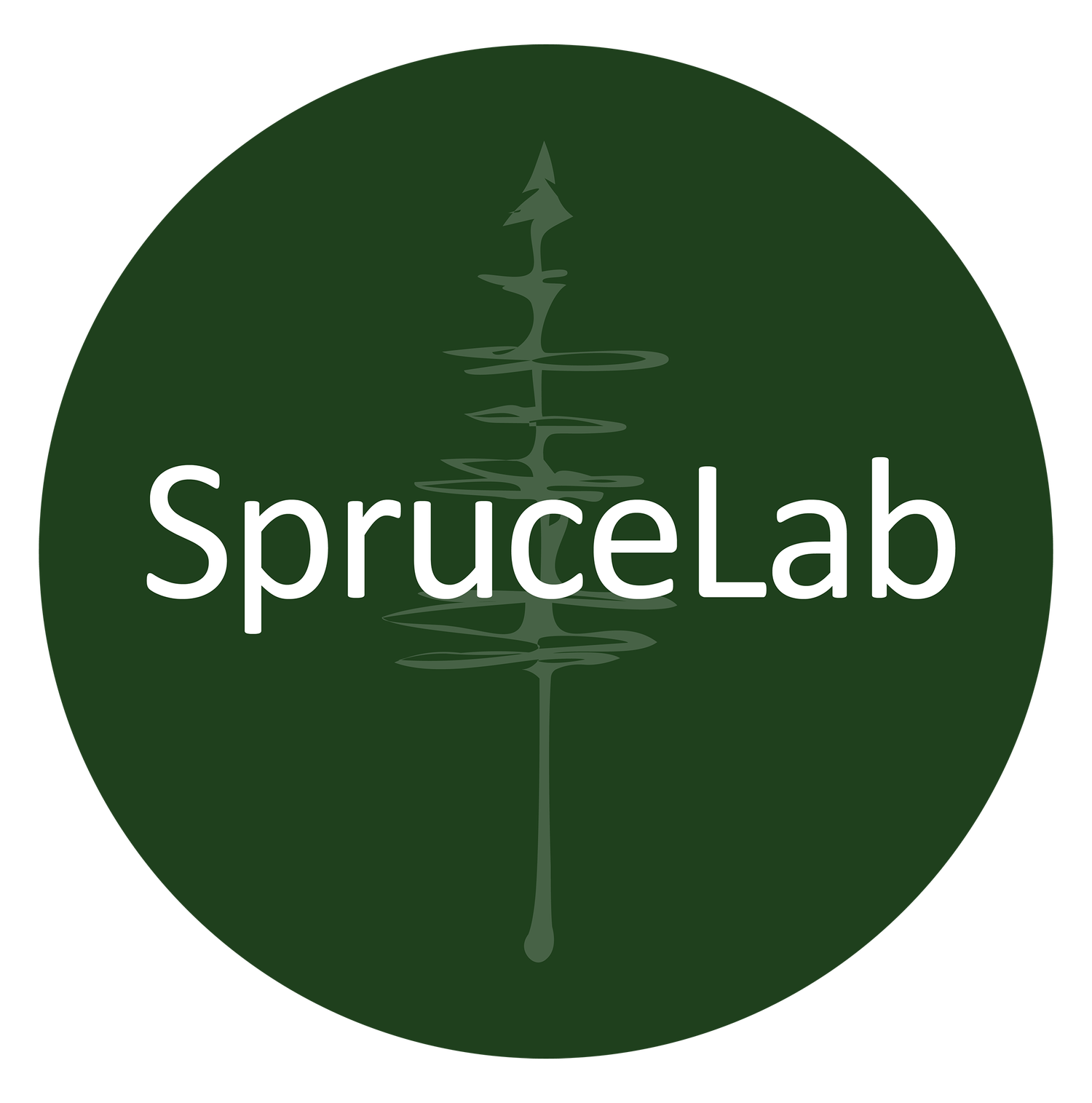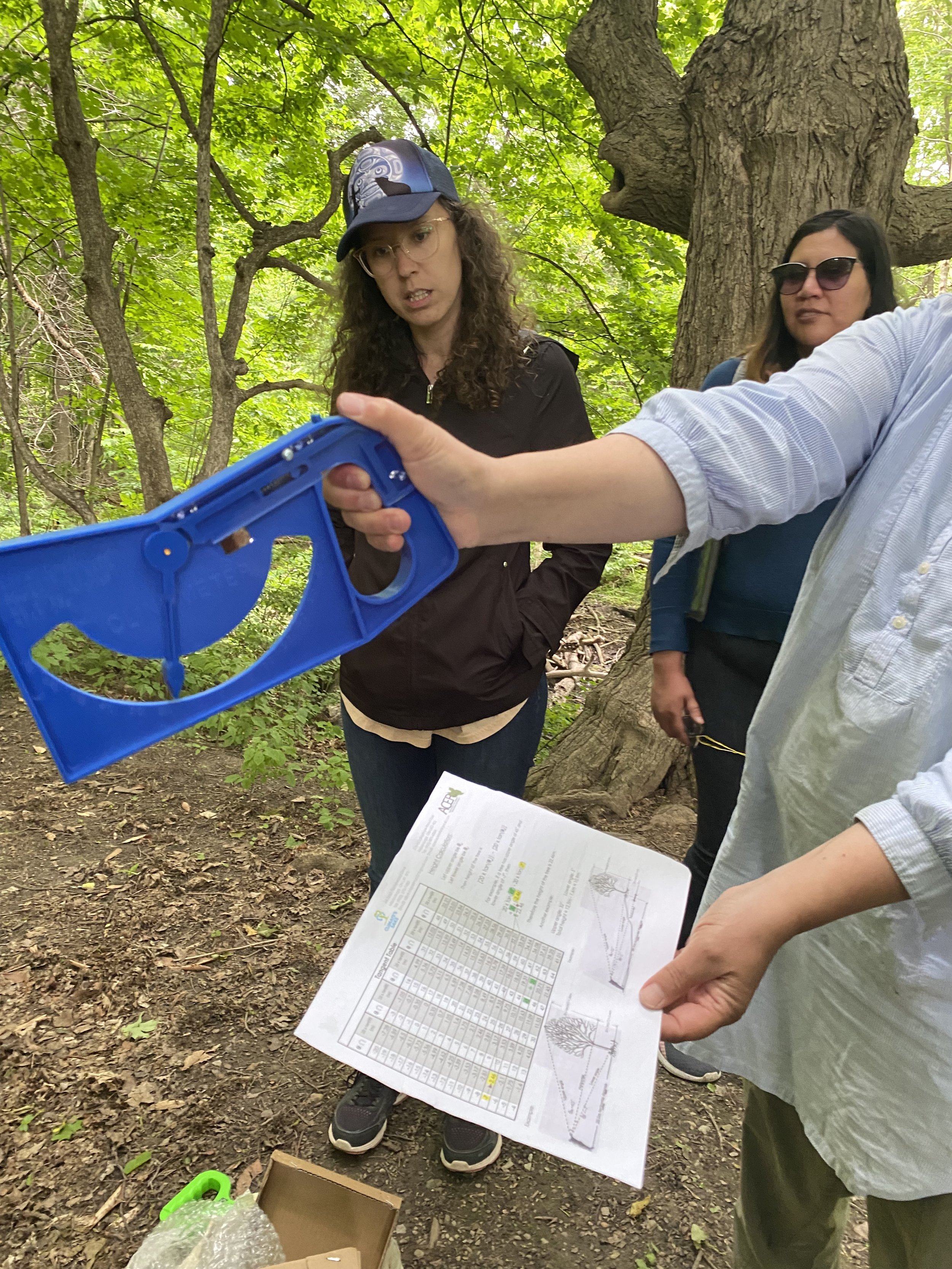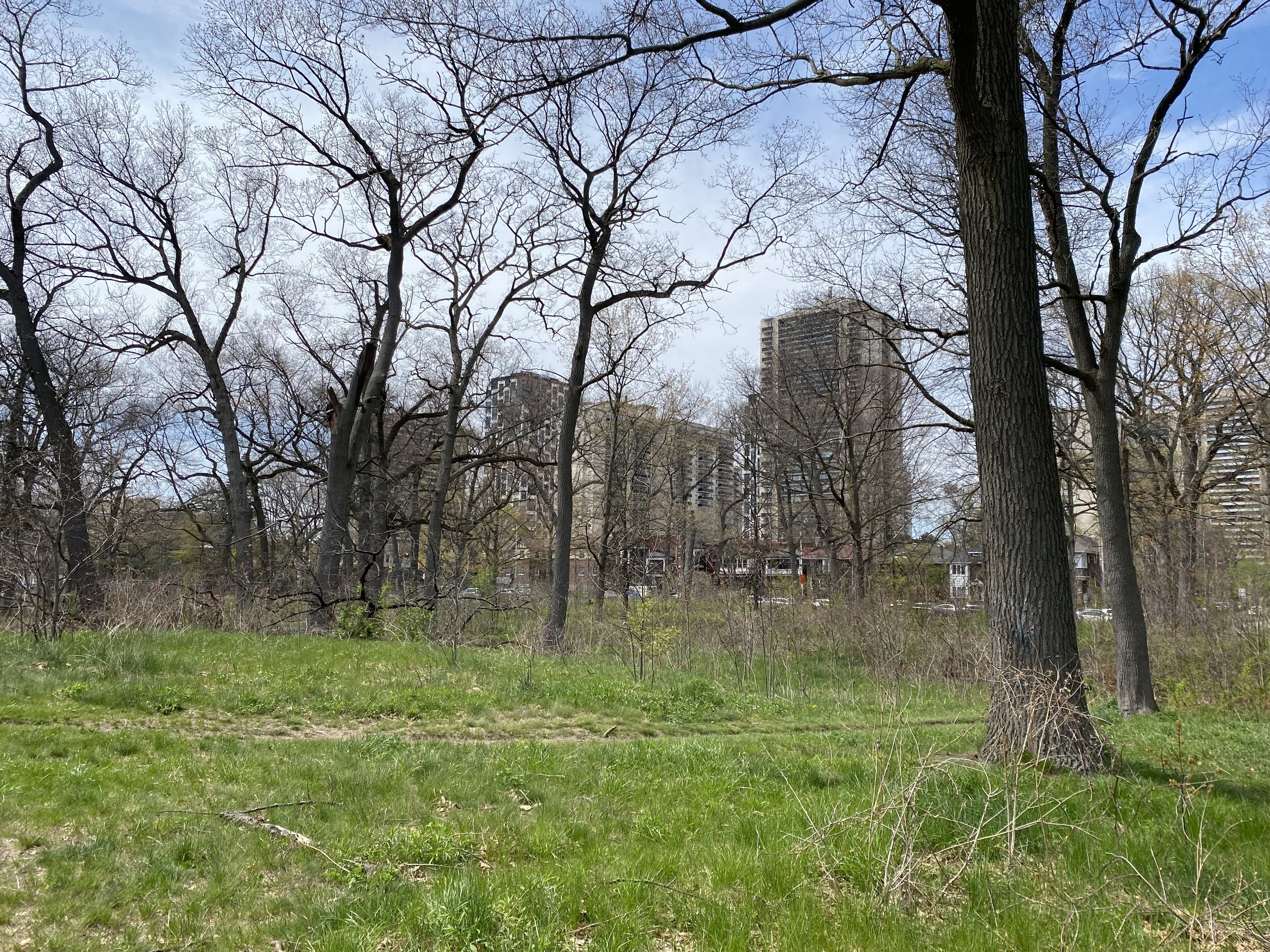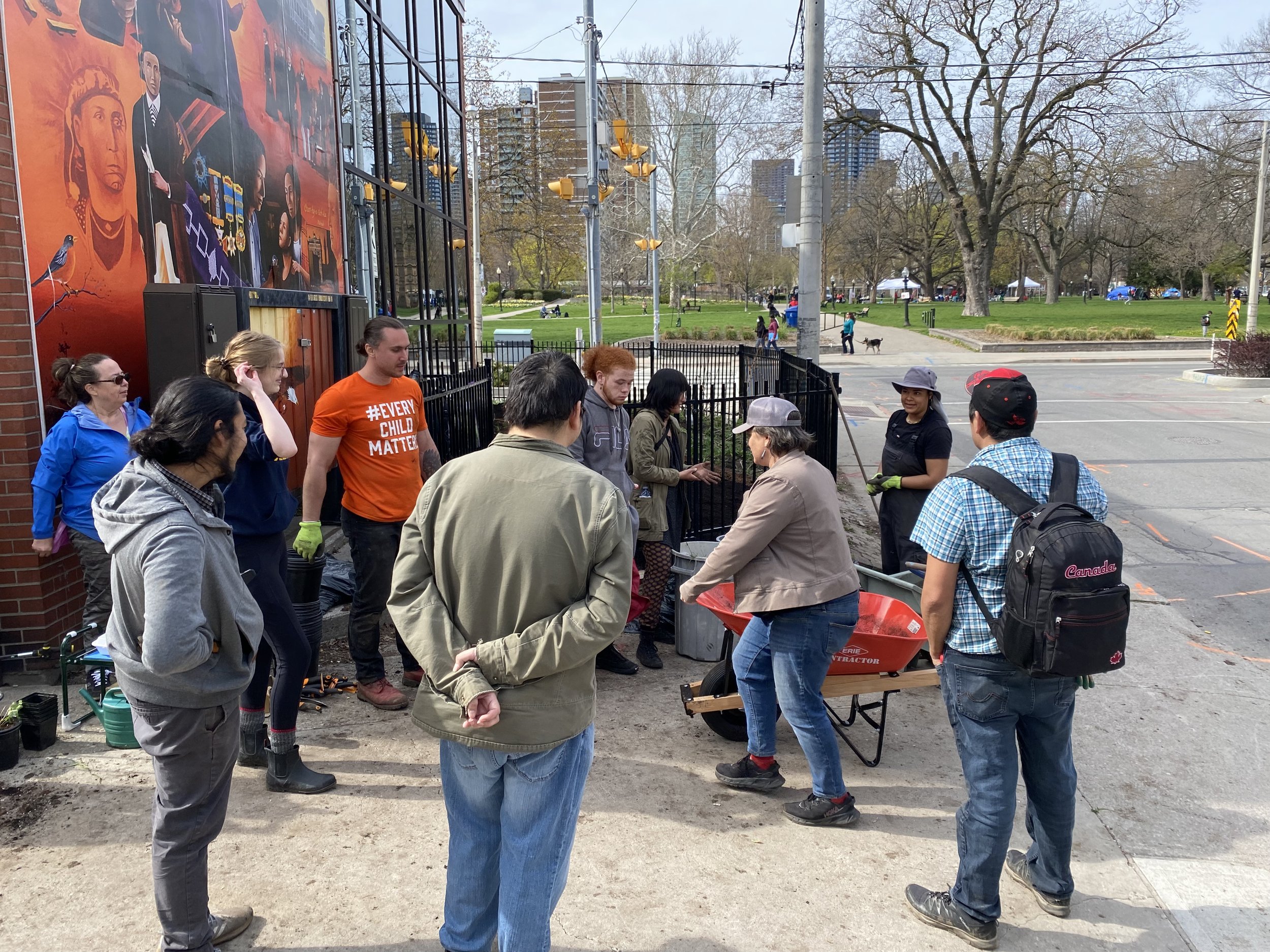Renita’s Full Circle Experience
Earth Tending: Green Infrastructure Training
Written by Renita Swan while working at SpruceLab, edited by Tullia Marcolongo
May 3rd, 2022-June 9th, 2022
Four all-day trips while the rest encompassed spending the mornings participating in workshops/talks and the afternoons outdoors on site.
The Earth Tending Green Infrastructure Training Program was, and is, the full circle experience I never knew I needed.
I moved to Tkaronto from British Columbia and upon arriving immediately felt out of place. For many months I felt unsettled. I often wondered how I was ever going to ‘fit in or make it’ in a place where I truly felt I did not belong. One day, I was pleasantly surprised when I received a call from SpruceLab. I was told at the time that the course was full but we ended up chatting about my work and experiences. The universe was on my side since I got into the program shortly after thanks to another participant dropping out.
Renita learning about tree identification and health at the Humber Arboretum in Etobicoke, Toronto.
From day one I could tell that it was going to be a transformative experience for all of us. I spent six weeks with six other trainees learning about various nature-based topics through an array of hands-on workshops and activities based on green, brown and gray infrastructure.
Our instructors touched on teachings such as plant identification, nutrient-rich soil and bioswales (1) surrounded by permeable pavement (2). There were many exciting firsts including a day spent outside the city at the Native Plants of Claremont nursery which specializes in Ontario native species, starting and ending the training sessions with Talking Circles, planting a native species garden for Miziwe Biik, and learning that permaculture (3) and pollinators go hand-in-hand.
During a tree tour at the Claremont Nature Centre with Carolynn Crawley of Msit No’kmaq, we had the pleasure of learning how to identify many foods and medicines growing around us. She also gave a similar tree tour in High Park on the Black Oak Savanna found there where she touched on the tree health and the various causes of their decline, including disease.
Black Oak Savanna in High Park, Toronto.
Todd Irvine, an arborist at City Forest, spent a morning with us delivering a presentation on trees. We learned that the phloem of a tree, the first layer underneath the bark, enables nutrients to flow to the rest of the tree and water is stored in its leaves.
Another interesting fact is that bees are not the only pollinators out there. All pollinators, including beetles and birds, are equally important. Native garden advocate Lorraine Johnson spoke to us about the relationship between a monarch butterfly and the milkweed – how the two depend on each other. This is because the monarch butterfly needs native milkweed species as a food source to host their eggs and larvae, and in turn the butterfly pollinates milkweeds ensuring the plant’s survival.
Brian Millward from LEAF, spent an afternoon with us outside teaching us important facts about plants, specifically the trees and shrubs to be planted. He taught us the importance of proper spacing between shrubs and trees, as well as between trees. The best time for planting trees/shrubs is in spring and fall when temperatures are not too hot and there is typically more rainfall.
Sheila Boudreau, from our team at SpruceLab, showed us a couple of designs she worked on, including Raindrop Plaza. Here she created a design that transformed a paved traffic island and roadway into a green space that includes rain gardens, bioretention (4) areas, and native plants. It exemplifies how having those design elements in place improves water systems by filtering pollutants from stormwater runoff before it enters storm drains.
Native plant garden planting at the Miziwe Biik office in Toronto.
The most significant moment for me was the day our class got to spend an afternoon on green roofs, particularly one that was over 30 stories high. For me, it was an eye-opening “Aha!” moment that brought some life back to all parts of me. It instilled great hope, a hope I did not think I would feel again in this city. Being up in the sky helped me see that there is so much more life and green space than I was ever able to see and experience down on the ground.
This program in its entirety is everything that Truth and Reconciliation needs to be. As a whole, the course touched perfectly on how we as humans can come together and heal not only Mother Earth but also ourselves - as one team together on the same side.
_______
1 Bioswale: shallow depressions usually composed of native plants that capture and treat stormwater runoff
2 Permeable Pavement: A type of paving that allows stormwater to filter through the surface preventing water from pooling.
3 Permaculture: Jane Hayes of Garden Jane defines this as a practice of principles centered around the relationships between humans and growing a garden. The goal is to create green spaces that mimic the natural landscape in the surrounding area.
4 Bioretention: removal of sediment and pollutants from stormwater runoff using plants and soil.



